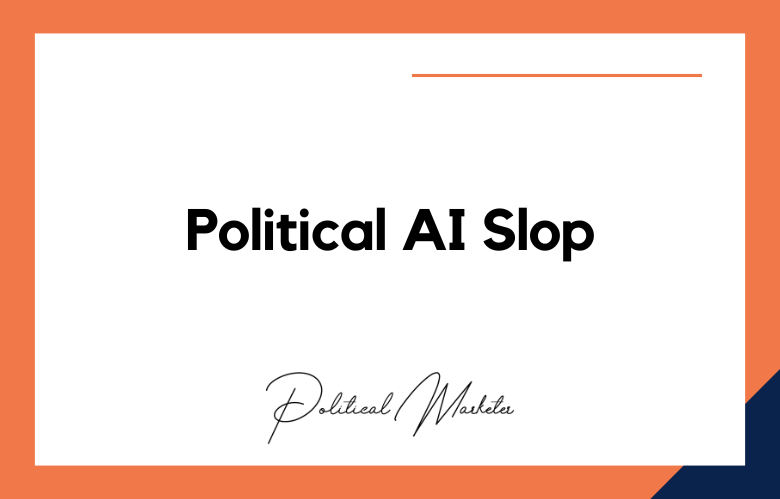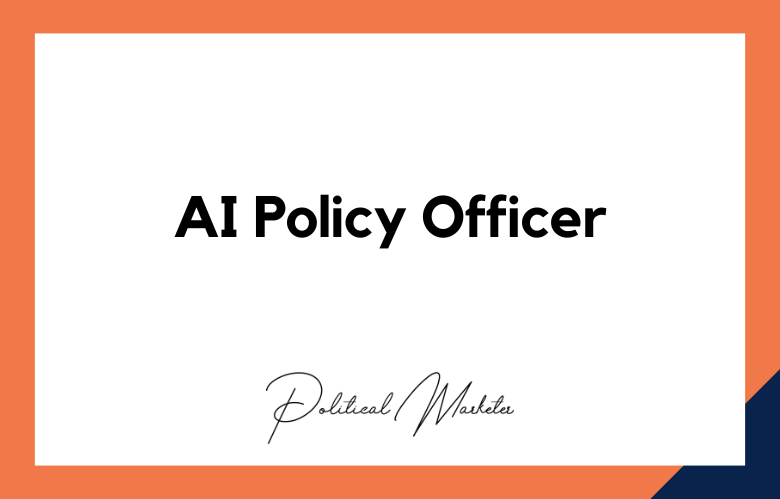In recent years, political campaigns have undergone a massive transformation. Gone are the days of relying on gut instincts and traditional voter demographics to win elections. Today, drives are increasingly utilizing advanced technologies like predictive analytics and machine learning to gain insight into the behaviors and attitudes of voters.
These technologies have proven instrumental in helping political campaigns identify vital issues, target specific demographics, and measure the effectiveness of their messaging. , we’ll explore how predictive analytics and machine learning revolutionize political campaigns and what this means for voters everywhere.
Targeted Advertising:
One of the most significant ways predictive analytics and machine learning transform political campaigns is through targeted advertising. Campaigns can now use data from social media, web browsing history, and voter registration records to target specific groups of voters with tailored messages. This approach has proven highly effective in mobilizing voters who may have otherwise been disengaged.
Predictive Modeling:
Another fundamental way predictive analytics and machine learning transform political campaigns is through predictive modeling. By analyzing vast amounts of data on voting patterns, consumer behavior, and social media activity, movements can create predictive models that forecast a person’s likelihood of supporting a particular candidate or issue. This enables campaigns to tailor their messaging in real time to maximize their effectiveness.
Voter Turnout:
Predictive analytics and machine learning are also used to increase voter turnout. By analyzing data on the demographics and habits of various voter groups, campaigns can identify the most effective messages and channels for reaching them. For example, campaigns can use social media and mobile apps to target younger voters who are more likely to engage with these platforms.
Fundraising:
Predictive analytics and machine learning are also used to transform fundraising efforts. Predictive models can identify the most effective strategies for soliciting contributions by analyzing data on past donors and campaign expenditures. This approach has proven highly effective in mobilizing small-dollar donors, who can account for significant campaign contributions.
Polling:
Predictive analytics and machine learning transform how campaigns conduct polling. By analyzing social media activity and other online data, movements can create more accurate and timely surveys that provide insight into the attitudes and preferences of voters. This allows campaigns to adjust their messaging and strategy in real time to maximize their effectiveness.
Unmasking the Voters: How Predictive Analytics and Machine Learning are Revolutionizing Political Campaigns
The field of politics has always required a deep understanding of the electorate and their beliefs. This understanding has historically come from extensive polling and surveying of constituents. However, with the advent of predictive analytics and machine learning techniques, political campaigns are being revolutionized to unprecedented levels of effectiveness.
Predictive analytics uses statistical models, algorithms, and artificial intelligence to analyze vast amounts of data and predict outcomes accurately. This powerful tool is now being used in political campaigns to understand voters better than ever before.
Through analyzing vast amounts of data such as voting history, social media activity, demographic information, and purchase behavior, political campaigns can gain a more in-depth understanding of individual voters and target them more precisely.
The Game Changer: Harnessing Predictive Analytics and Machine Learning in Political Campaigns
Political campaigning has significantly transformed in recent years by integrating predictive analytics and machine learning. These technologies have revolutionized political campaigns by providing unprecedented insight into voter behavior, demographics, and preferences. This has allowed political campaigns to target voters more effectively, deliver personalized messages, and optimize fundraising efforts.
Predictive analytics involves using statistical algorithms and data mining techniques to analyze historical data and predict future outcomes. In the case of political campaigns, this consists of analyzing voter data, such as previous voting patterns, party affiliation, and demographic information, to identify key voter segments likely to be receptive to a specific campaign message.
Winning the Vote: Leveraging Predictive Analytics and Machine Learning for Political Success
In the world of politics, securing the vote is essential for success. Whether for a political candidate or a ballot measure, it is crucial to identify the key factors influencing voters and understand how to leverage them. With the advent of predictive analytics and machine learning techniques, modern political campaigns can gain a competitive advantage by utilizing these powerful tools to sway voters.
Predictive analytics uses data, statistical algorithms, and machine learning techniques to analyze historical data and predict future outcomes. By analyzing voter data such as demographics, past voting history, and political affiliations, political campaigns can identify the most likely supporters and predict voting trends in specific geographic regions. Machine learning takes this one step further by enabling movements to predict the most effective messages and strategies for different segments of voters.
The Secret Weapon: Unveiling the Power of Predictive Analytics and Machine Learning in Political Campaigns
Political campaigns have always been a high-stakes game that requires a strategic approach and careful planning. Traditionally, traditional methods such as polling, focus groups, and door-to-door canvassing were the primary tools used by campaign teams.
However, in recent times, the advent of modern technologies has revolutionized the campaign strategy landscape. Predictive Analytics and Machine Learning, two powerful tools of current data and analytics, have emerged as the secret weapon in political campaigns.
At its core, predictive analytics involves using data, algorithms, and statistical models to analyze current and past data sets to predict future events and outcomes. Predictive analytics has become an essential tool in political campaigns because of its capability to provide actionable insights from vast amounts of data that give campaign teams a competitive edge.
Shaping the Future: Predictive Analytics and Machine Learning in Political Campaigns
In recent years, predictive analytics and machine learning in political campaigns have become increasingly prevalent and influential. Political campaigns have always relied on data and analysis to determine their strategy and target their audience. However, the process has become much more sophisticated and practical with modern technology and data analysis tools.
Predictive analytics involves using data, statistical algorithms, and machine learning techniques to identify the likelihood of future outcomes based on historical data. It has become an indispensable tool for political campaigns, enabling them to analyze vast amounts of data and predict voter behavior accurately.
Data-Driven Democracy: The Role of Predictive Analytics and Machine Learning in Political Campaigns
In recent years, data-driven democracy has emerged as a critical aspect of modern political campaigns. Predictive analytics and machine learning technologies allow political campaigns to gather vast amounts of data from various sources and use it to their advantage. These technologies can significantly assist in targeting and mobilizing voters, fundraising, and developing effective campaign strategies.
One significant advantage of using predictive analytics is that it can assist campaigns in identifying voters who are likely to support their candidate and predict their voting behavior and patterns. This information can be used to tailor campaign messages to individual voters, increasing the chances of getting their vote.
Machine learning techniques like natural language processing and sentiment analysis can also help identify voters’ social media habits and attitudes, providing insights into behavior and opinion trends. This can be leveraged to design customized advertisements and messages based on the voter’s interest.
Conclusion:
Predictive analytics and machine learning are revolutionizing political campaigns in unimaginable ways. By enabling movements to target specific audiences, tailor their messaging in real-time, and measure the effectiveness of their efforts, these technologies are dramatically increasing the efficiency and efficacy of political campaigns.
For voters, this means a more engaging and personalized experience reflecting their interests and concerns. As campaigns continue to evolve, it’s clear that predictive analytics and machine learning will remain at the forefront of this transformation.
Call: +91 9848321284
Email: [email protected]
Predictive Analytics and Machine Learning in Political Campaigns: FAQs
What is predictive analytics in political campaigns?
Predictive analytics uses historical and real-time data to forecast future voter behavior, turnout likelihood, donation probability, and campaign performance outcomes.
How does machine learning differ from traditional data analysis in politics?
Unlike static models, machine learning continuously learns and improves by identifying patterns in large datasets—offering real-time campaign insights and adapting to new voter behavior trends.
What are the main benefits of predictive analytics for political strategists?
It helps in identifying swing voters, forecasting election outcomes, optimizing message delivery, targeting fundraising efforts, and personalizing voter outreach.
How do campaigns gather data for predictive models?
Data is collected from voter rolls, surveys, canvassing, social media, email engagement, event participation, donation history, and third-party demographic databases.
Can predictive analytics identify undecided voters?
Yes. These models can detect behavioral traits and engagement patterns that indicate indecision, allowing campaigns to focus persuasive efforts on such groups.
What is the role of machine learning in voter segmentation?
Machine learning clusters voters based on demographics, psychographics, and online behavior—enabling hyper-targeted messaging strategies.
Can these technologies predict voter turnout?
Absolutely. Turnout prediction models use historical turnout data, engagement levels, and socioeconomic factors to determine the likelihood of individuals casting a vote.
How does sentiment analysis integrate with predictive analytics?
Sentiment analysis measures public mood from digital platforms and feeds that insight into predictive models, enhancing the understanding of voter emotions and opinion shifts.
Are predictive models used in real-time decision-making during elections?
Yes. Campaigns use live dashboards powered by machine learning to track ad performance, adjust messaging, and deploy resources in real time.
Can predictive analytics assist in fundraising strategies?
Definitely. It identifies high-propensity donors based on giving history, interests, and demographic factors, improving targeting and messaging effectiveness.
What are the most common machine learning algorithms used in political campaigns?
Logistic regression, random forests, decision trees, support vector machines, and neural networks are frequently used for classification and prediction tasks.
Do predictive models help with event planning and scheduling?
Yes. Campaigns use data to choose optimal event locations, timing, and audience segments—maximizing attendance and impact.
Can predictive analytics help mitigate political crises?
By detecting anomalies in sentiment, misinformation spikes, or media backlash, predictive systems alert teams to act quickly and implement damage control strategies.
How accurate are machine learning predictions in politics?
Accuracy depends on the quality and freshness of data. When implemented well, these systems often outperform traditional polling and gut-based strategy.
What is the risk of algorithmic bias in political machine learning?
If the training data contains biases (racial, geographic, gender), models can reinforce stereotypes or exclude certain populations, leading to skewed targeting.
How is A/B testing enhanced through predictive analytics?
Predictive tools analyze test performance faster and recommend optimized variations, leading to more effective campaign communications.
Can predictive analytics optimize ad spending?
Yes. By analyzing ROI, audience behavior, and time-of-day performance, campaigns can allocate ad budgets more effectively across platforms.
Do campaigns need in-house data teams for machine learning?
Not necessarily. Many use external consultants or platforms, but having in-house expertise helps with faster iteration and customization.
What role does natural language processing (NLP) play in this context?
NLP helps extract insights from unstructured text (like comments, speeches, news) and feeds them into predictive systems for enhanced analysis.
Is predictive analytics limited to national elections?
No. It is increasingly used in local, regional, and issue-based campaigns where targeted outreach and limited budgets demand smart strategy.










